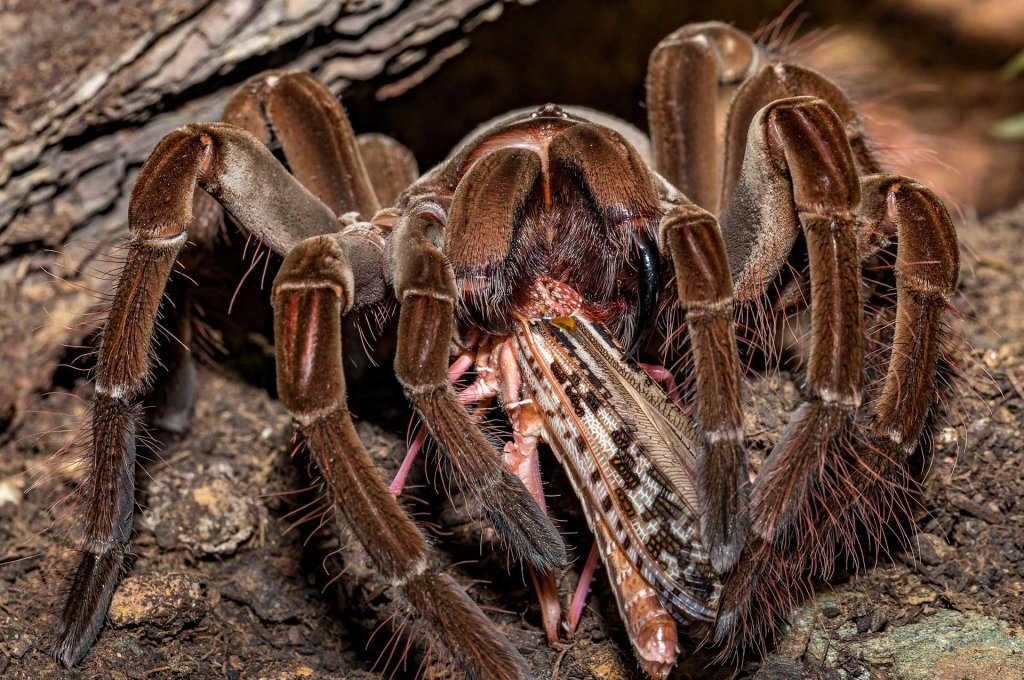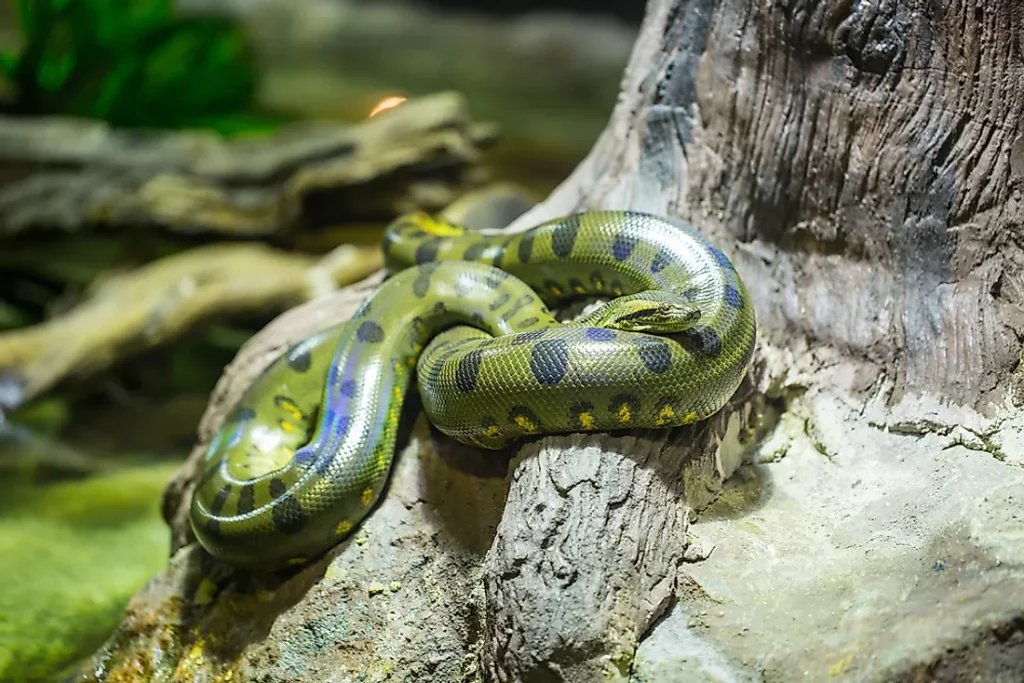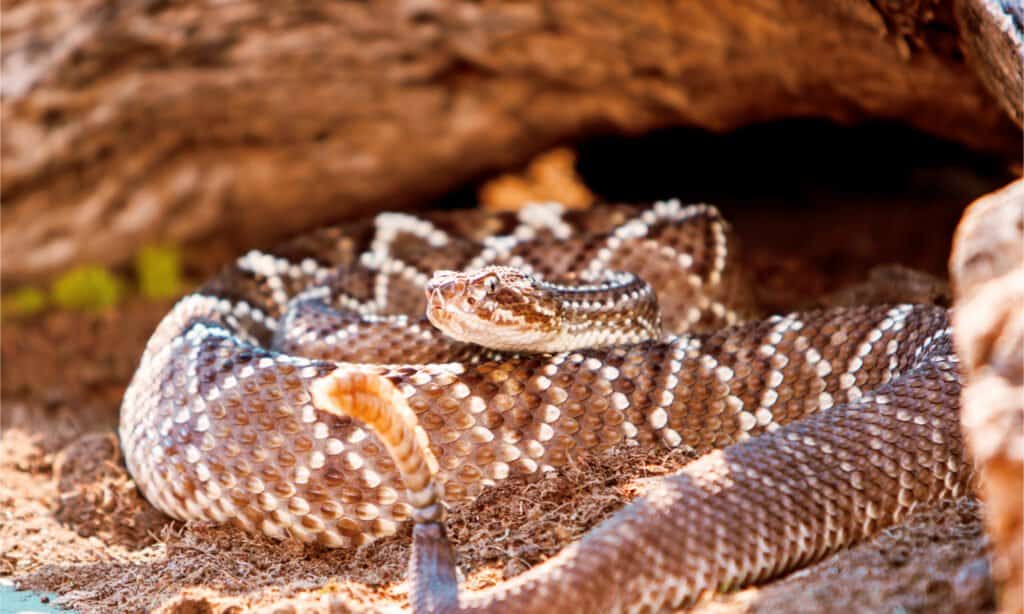The Amazon Rainforest, with its bright greenery and diverse wildlife, is a place of mystery. But among the beauty, some creatures are too dangerous and powerful as well. These animals have adapted over time to grow in their unique environment, and each one plays an important role in the perfect balance of nature, from stealthy predators to creatures armed with potent venom.
The Amazon is home to a group of wildlife that demands caution and admiration. You should know these animals because they are not just ordinary creatures. They can harm you or any other animal very badly.
Through these insights, we’ll gain a deeper appreciation for the complex web of life that defines this extraordinary natural forest.
1. Brazilian Wandering Spider

The Brazilian Wandering Spider, often called the banana spider, is one of the most formidable tropical rainforest animals in the Amazon. This spider is infamous for its aggressive nature and lethal venom. These spiders are large, with leg spans reaching up to 6 inches. They earned the name wandering because they don’t spin webs but instead roam the forest floor at night in search of prey. One of the most special qualities of these spiders is their unique hunting technique. They often hide on the walls of caves, waiting to trap unsuspecting prey. When they spot a potential victim, they use their strong hind legs to grasp the cave’s ceiling and then jump at their prey with incredible speed.
2. Green Anaconda

The Green Anaconda is an iconic inhabitant of the Amazon Rainforest and holds the title of the world’s largest snake. These massive reptiles can reach lengths of up to 30 feet or more. They are mainly aquatic and often found in slow-moving rivers and swamps. Their dark green coloration and remarkable size make them a true symbol of Amazonian wildlife. Unlike some other dangerous creatures, the Green Anaconda doesn’t rely on venom to subdue its prey. Instead, it uses its incredible muscular strength to constrict and suffocate its victims, including large mammals and even the occasional caiman.
3. Jaguar

The Jaguar is the largest big cat native to the Americas and is often regarded as the king of the Amazon Rainforest. These majestic creatures are known for their powerful build, distinctive rosette-patterned coats, and remarkable hunting abilities. Jaguars are top-tier predators in their ecosystem, capable of taking down a wide range of prey. What sets jaguars apart from many other big cats is their preference for aquatic environments. They are strong swimmers and often hunt in and around water, making them agile predators of fish, turtles, and caimans. Their ambush-style hunting strategy involves surprising their prey from a hidden vantage point.
4. South American Rattlesnake

The South American Rattlesnake is one of the most venomous snake species in the world, and it calls the savannah regions of the Amazon home. These snakes possess a distinct rattle on their tail, which they use as a warning signal when they feel threatened. Their venom is a potent cocktail of toxins that can cause a range of symptoms, including difficulty breathing, changes in heart rate, severe pain, and extensive bruising. Encounters with South American Rattlesnakes are rare, as they tend to avoid human contact. However, if disturbed or cornered, they will not hesitate to attack. These snakes play a crucial role in the ecosystem by helping control rodent populations.
5. Pit Vipers

Pit Vipers are a group of venomous snakes that have adapted to grow in various habitats, including the Amazon Rainforest. These snakes are equipped with specialized heat-sensing pits, which are present between their eyes and nostrils, which let them sense the body heat of their prey. This special adaptation makes them highly effective hunters, capable of striking with precision. Among the most venomous snakes in the world, a bite from a Pit Viper can have severe consequences. The venom may lead to difficulty breathing, changes in heart rate, intense pain, and extensive bruising.
6. Electric Eel

The Electric Eel is a remarkable and potentially dangerous species that inhabits the waters of the Amazon River basin. Despite its name, it is not actually an eel but rather a type of knifefish. What sets this creature apart is its unique ability to produce electric shocks, which it uses both for hunting and self-defense. These shocks are generated by specialized electric organs that comprise around 80% of the eel’s body. When threatened or pursuing prey, it can discharge powerful electric pulses, which can stun smaller animals. While the shocks are not typically lethal to humans, they can harm the heart and cause respiratory failure in extreme cases.
7. Black Caiman

The Black Caiman, native to the Amazon basin, is the largest species of the Alligatoridae family. Which holds the title of the largest predator in the Amazon ecosystem. These impressive reptiles dominate the waters, preying on a diet that includes turtles, fish, birds, and even some land-dwelling creatures. With their dark, almost black coloration, they blend easily into the murky waters of the Amazon, making them highly effective hunters. Their formidable size and powerful jaws. Which allows them to take down sizable prey, contributing to their status as apex predators in this dynamic ecosystem.
Conclusion
So, those are the most dangerous animals you might find in the Amazon Rainforest. It’s their home, so if you ever visit, be careful and respect their space. Always listen to the guides and follow their advice to stay safe.
Nature is amazing, but it can be wild and unpredictable. These creatures have roles to play in the perfect balance of the rainforest. It’s fascinating to learn about them from a safe distance. Feel free to ask if you have any more questions about the Amazon or any other place.
It’s always good to be curious and learn about the world around us.

